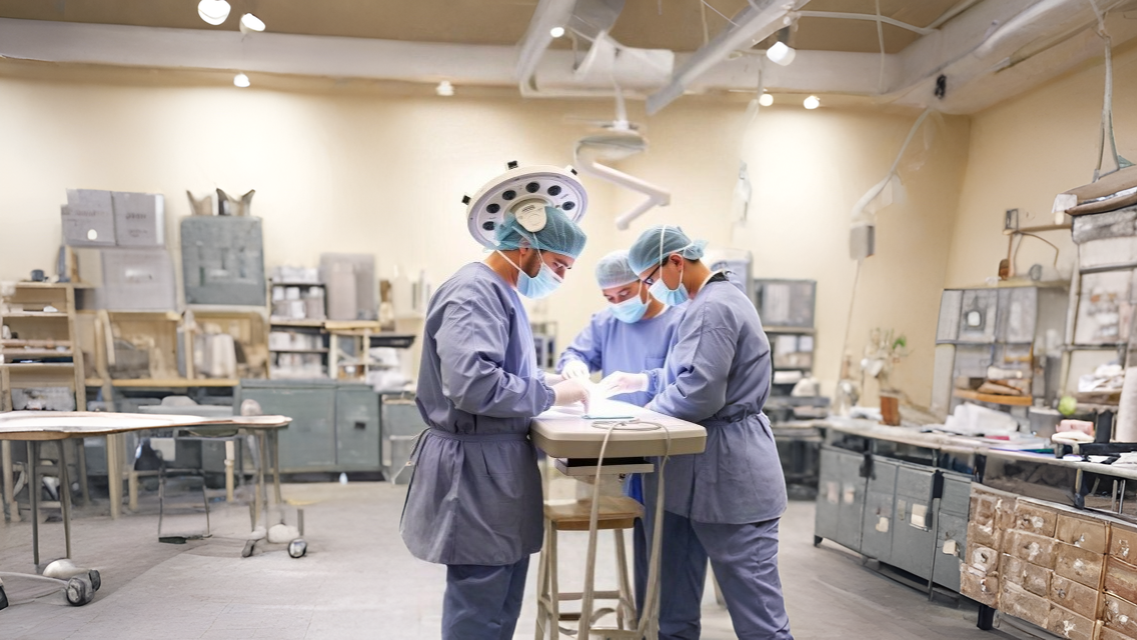Emervuy Surgery represents a significant advancement in medical science, combining cutting-edge technology with the principles of precision medicine to tailor surgical procedures to individual patient needs. This innovative approach enhances surgical accuracy, minimizes invasiveness, and promotes faster recovery, marking a transformative shift in patient care.
The Genesis of Emervuy Surgery
The development of Emervuy Surgery stems from the integration of advanced robotic systems and real-time imaging technologies. Surgeons operate from a console that provides a high-definition, three-dimensional view of the surgical site, allowing for meticulous planning and execution of procedures. This fusion of human expertise and technological innovation has paved the way for more precise and less invasive surgeries
Core Technologies in Emervuy Surgery
Robotic Assistance
Central to Emervuy Surgery are sophisticated robotic systems equipped with multiple arms capable of holding and manipulating surgical instruments with exceptional precision. These robotic arms translate the surgeon’s hand movements into fine, scaled motions, enabling operations through smaller incisions and reducing trauma to surrounding tissues.
Advanced Imaging Techniques
Emervuy Surgery utilizes real-time 3D imaging and augmented reality to provide detailed visualizations of the patient’s anatomy. This allows surgeons to navigate complex structures with enhanced accuracy, ensuring that each step of the procedure is informed by comprehensive, real-time data.
Artificial Intelligence Integration
Artificial intelligence (AI) plays a crucial role by analyzing vast amounts of data to assist in decision-making during surgery. AI algorithms can identify patterns and provide insights that enhance the surgeon’s ability to perform complex procedures with greater confidence and precision.
Applications Across Medical Specialties
Orthopedic Surgery
In orthopedics, Emervuy technology is employed for joint replacements and spinal surgeries. The precision of robotic assistance ensures accurate implant placement, which is critical for the success and longevity of orthopedic procedures.
General Surgery
General surgeons utilize Emervuy systems for procedures such as gallbladder removals and hernia repairs. The minimally invasive nature of these surgeries leads to reduced postoperative pain and quicker recovery times for patients.
Gynecological Surgery
Emervuy-assisted techniques are increasingly used in gynecology for hysterectomies and treatments of endometriosis. The enhanced precision is particularly beneficial in preserving delicate reproductive structures.
Urological Surgery
In urology, procedures like prostatectomies and kidney surgeries benefit from the meticulous control offered by Emervuy systems, aiding in the preservation of vital tissues and functions.
Advantages of Emervuy Surgery
Minimally Invasive Approach
Smaller incisions result in less tissue damage, reduced blood loss, and decreased postoperative discomfort. Patients often experience shorter hospital stays and faster returns to daily activities.
Enhanced Surgical Precision
The robotic systems provide a level of accuracy that surpasses traditional methods, allowing for meticulous manipulation of instruments and improved outcomes
Reduced Risk of Complications
The precision and control inherent in Emervuy Surgery contribute to lower rates of surgical complications, such as infections and unintended tissue damage
Personalized Treatment Plans
By integrating patient-specific data, Emervuy Surgery facilitates customized surgical approaches that cater to the unique anatomical and physiological characteristics of each individual.
Challenges and Considerations
Learning Curve for Surgeons
Mastery of Emervuy systems requires specialized training and experience. Surgeons must undergo comprehensive education to effectively operate the robotic interfaces and interpret advanced imaging data
Financial Implications
The acquisition and maintenance of Emervuy technology involve significant investment. Healthcare facilities must evaluate the cost-benefit ratio, considering factors such as improved patient outcomes and potential long-term savings
Accessibility and Availability
Access to Emervuy Surgery may be limited in certain regions due to financial constraints or lack of trained personnel. Efforts are needed to expand the availability of this technology to ensure broader patient access
Technical Reliability
As with any technological system, there is a risk of malfunctions or technical issues during procedures. Surgeons must be prepared to address such challenges and have contingency plans in place.
Future Directions in Emervuy Surgery
Integration with Artificial Intelligence
Ongoing advancements in AI are expected to further enhance the capabilities of Emervuy systems, providing real-time analytics and predictive modeling to support surgical decision-making.
Expansion of Telemedicine and Remote Surgery
The potential for remote-controlled surgeries using Emervuy technology could revolutionize access to specialized surgical care, allowing expert surgeons to operate on patients in distant locations
Advancements in Personalized Medicine
As precision medicine evolves, Emervuy Surgery is poised to incorporate more individualized data, such as genetic information, to tailor surgical interventions even more closely to patient-specific needs.
Emervuy Surgery stands at the forefront of modern surgical innovation, offering a blend of technological sophistication and personalized care that has the potential to significantly



